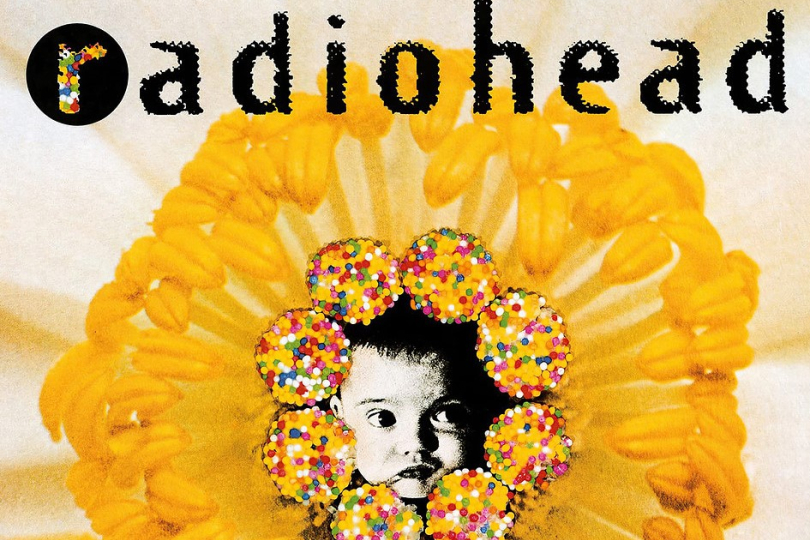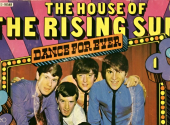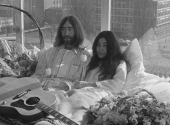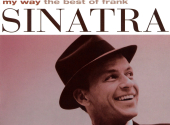
Story of a Hit #5: "Creep"
Radiohead have countless great songs, from a prolific career of 30 years and 9 albums, they're a band that needs little introduction. Today we're looking at "Creep", from their very first album Pablo Honey, and we're asking the question, out of all their hits, why do people keep coming back to listen to it?
It was the 1992 debut single of the now legendary Radiohead. Imagine that, 30 years ago, a little-known English rock band signed on to EMI and their very first release would go on to be their most recognised song. With a billion streams on Spotify and nearly that on Youtube, it is inarguably Radiohead's most listened-to song – but is it their most loved? It's the classic tale of a breakthrough song making a band so famous that they grew tired of playing it, at one stage even going 7 years between performing it.
Hardly their best, yet "Creep" fame lingers on
Of course, Radiohead have since had a long and noteworthy career, their subsequent albums The Bends and Ok Computer cemented their recognition in the ears of the public. But they didn't stop making brilliant albums, with following releases like Kid A, Amnesiac, and Hail to the Thief all receiving well-deserved praise and proving Radiohead have never stopped maturing and developing their sound. So why do people keep coming back to listen to "Creep"?
The song is akin to other hits of the era dubbed "slacker anthems", notably "Smells Like Teen Spirit", which somehow expressed the voice of the disenfranchised Gen X. The lyrics are timeless, speaking to that part of us we all share, that deep down we don't really fit in with the crowd: "But I'm a creep, I'm a weirdo, What the hell am I doin' here? I don't belong here." I think we can't underestimate the importance of these lyrics, how the feelings that "Creep" so brilliantly captured in the early nineties spoke to a generation, and that generation keeps coming back to listen to it.
To see just how well Radiohead captured this era, you need to see them playing it live before they became of it. Here they are performing on Late Night with Conan O'Brien in 1993, when they were well and truly on the way to international fame. It's a live rendition that is dirty and true, with plenty of noise and life.
Not just any four-chord song
Like so many hits before and after it, it is essentially a four-chord song. But don't be mistaken, it's no I-IV-vi-V that we've all heard a million times. The chord progression of "Creep" is one of its most outstanding features, it's so recognisable that if you were to hear the same progression with a different melody or lyrics, you might instantly identify it – more on that in a second.
In the key of G, the progression is G-B-C-Cm, and the second and fourth chords really stand out. The slow rolling tempo leaves us with plenty of time to ponder where each chord will take us, and that B major chord sounds like it wants to take us to E minor. That would be the relative minor of G major, a completely logical movement, but instead, the C major chord that follows, a simple shift up a half step, leaves us hanging in the air. Masquerading as an E minor chord, it shares a lot of notes with its C cousin, almost completing the perfect cadence – and yet not. The icing on the cake is so simple (but so essential) when the last movement takes us to C minor, the minor subdominant, and all its bittersweetness. It's a truly nostalgic progression which is outlined really well in this video.
Copyright and royalties
Its sound is so unique that soon after Radiohead released "Creep", the publishers of the 1972 song "The Air That I Breathe" took legal action. Both songs share that iconic chord progression (although The Hollies only used it in the verse), and the general feel and tempo are very similar. Radiohead acknowledged that it was the inspiration for "Creep", and the songwriters Albert Hammond and Mike Hazlewood were credited and received royalties. Unfortunately, we can't really know to what extent they reused the song – these things tend to get lost to time and out-of-court settlements. I think it's likely they copied the chord progression but came up with their own melody and words. Which, by the way, is pretty much songwriting in a nutshell – and, at least, they acknowledged it.
In 2017 Lana del Rey released "Get Free", a spacey melancholic number which at first seems VERY familiar. There it is again, that chord progression, standing out like a sore thumb. But it's not only that, the whole verse is shockingly similar, with the melody sometimes resembling whole phrases from "Creep". But don't take my word for it, The Guardian did a fantastic article, where they analysed the similarities between them. Radiohead filed a copyright lawsuit, and according to del Rey the 40% she offered in royalties was not enough, they wanted 100%. Phew... Still, she denied that she was even inspired by their legendary song.
A timeless song?
I think we can say that the chord progression of "Creep" is pretty unique and one of its shining qualities. The lyrics take us back to our youth, to old feelings of isolation and self-consciousness. But how can we forget the distorted guitar – the shift from the light to the dark – and how those few bursts of distortion take us into one of the most memorable choruses of the '90s?
I just love the way Jonny Greenwood plays those three clusters of noise at the end of the verse, and somehow for me, it encompasses so much of what the song is about. Like someone bursting out with the wrong remark at a party, or someone shouting out in anger before they've had a chance to think about what they were going to say. O'Brien said: "That's the sound of Jonny trying to fuck the song up. He really didn't like it the first time we played it, so he tried spoiling it. And it made the song."
While Radiohead partly resented and resisted its fame, "Creep" has lived on. Thom Yorke released a synthy cover in 2021, which takes it fully out of the '90s and into modern times. Described by Rolling Stone in one review as "fitting for our pandemic era, where a sense of time is warped and singular moments can seem both fleeting and drawn out simultaneously. Woozy synths and reverb enhance the feeling of discombobulation and uncertainty." And as with so many iconic songs, it also fits just well in the past. Postmodern Jukebox covered it in 2015, sending it back in time, and it has become their most-watched video (and that's saying something).
What do you think, is "Creep" the greatest Radiohead song? Or just a phenomenal start to a startlingly prolific band?
Leave us your opinion in the comments below!
If you have found an error or typo in the article, please let us know by e-mail info@insounder.org.





